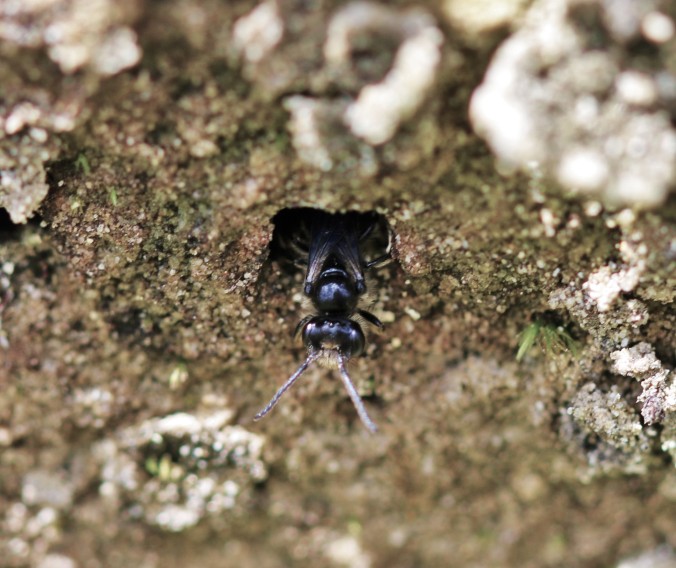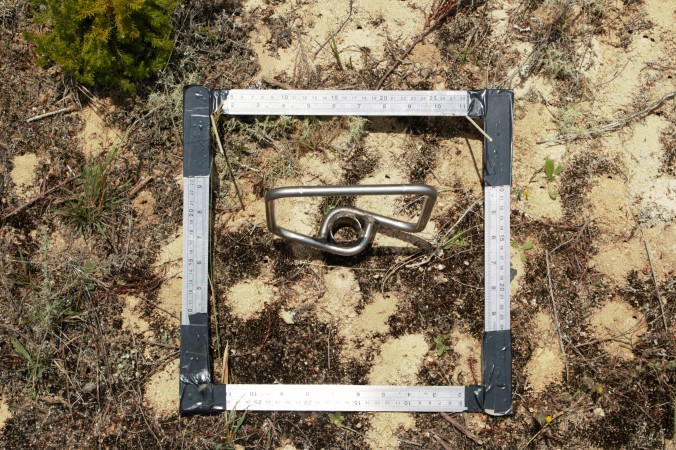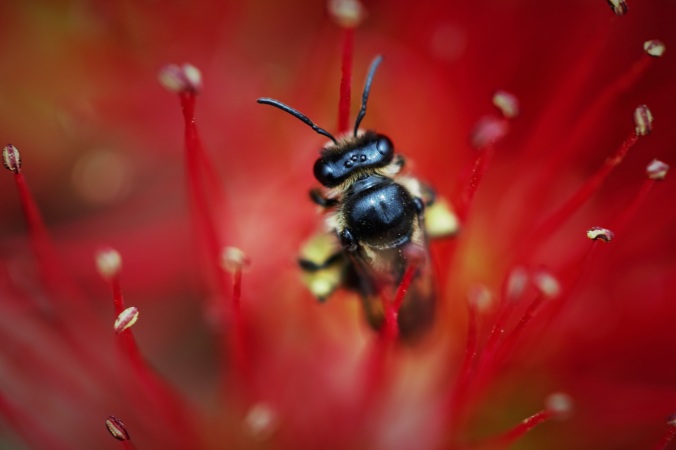Did you know that there are 27 species of native bees in New Zealand that are found nowhere else in the world? If your answer to this question was ‘no’, don’t worry – you are not alone! While most people are familiar with the ‘honey bee’ and ‘bumblebees’ (species that have been purposefully introduced to New Zealand to improve the pollination of crops), native bees often go unnoticed.
Most native bees in New Zealand are solitary and nest in the ground. All native bees consume pollen and nectar, and have similar life cycles. Female bees construct the nests in which their young are raised by digging blind-tunnels in the soil or using pre-existing tunnels in plant material. Each nest contains a cell in which the female bees place all the food that their larvae will need. They then deposit an egg and seal the cell to avoid contact with that part of the nest until the new bee has developed. Male bees on the other hand spend most their time feeding, mating and resting.

Native ground-nesting bees mating (photo by Anna Kokeny).
During the active flight season (mid-spring to early autumn), thousands of individuals nest alongside each other, forming large communities. By the end of autumn, adult bees die but the larvae overwinter until they emerge in mid-spring and the cycle repeats!

Native ground-nesting bee emerging from its nest (photo by Anna Kokeny).
Studying native bees can be difficult as there are few ways to easily monitor them. As a result, there is much to learn about their populations, diversity and distribution throughout New Zealand. The aim of my master’s project is to investigate how soil characteristics influence the distribution of solitary-ground nesting bees in the Waikato and Northland region. In order to do this, I am analysing soil samples collected from sites with native bees and sites without native bees and comparing this to the abundance and diversity of native bees. Already, my summer sampling has revealed that the most common species of native bee within those regions are Leioproctus paahaumaa and L. imitatus.

Collecting soil sample from a native bee nest site using a soil corer (photo by Anna Kokeny).
The two most frequently asked questions I’ve encountered whilst collecting data were: “do they make honey?” and “do they sting?” No, native bees do not produce honey and will very rarely sting humans. So, why should we care about them? Native bees are key pollinators of New Zealand’s native flora. They are known to pollinate a wide range of plants including mānuka, kānuka and pohutukawa.

Native ground-nesting bee laden with pohutukawa pollen (background yellow colour)(photo by Anna Kokeny).

Native bee foraging on manuka flower (photo by Anna Kokeny).
Also, surprisingly Leioproctus bees can open a mistletoe flower (Peraxilla tetrapetala) by biting the tip of the bud. The main pollinators of mistletoe are bellbirds and tūī, but since introduced pests have significantly reduced bird numbers, native bees have partially replaced them as pollinators (Robertson et al., 2005).
Get involved
To find out more about native bees join this Facebook group. This page is dedicated to NZ native bees – what they look like, where they live, what they do and how we can support them.

Anna Kokeny is a MSc student in the Centre of Biodiversity and Biosecurity, School of Biological Sciences, University of Auckland. She is interested in the distribution of native solitary ground nesting bees in the Waikato and Northland regions. She is supervised by Jacqueline Beggs, Jamie Stavert, Anne Gaskett and David Pattermore (Plant and Food Research).
Pingback: The birds and the bees (and the wasps?) | Ecology Ngātahi
I am a member of the Waipu Golf Club where native bees are seen in increasing numbers in December. Their holes and sand piles are mainly seen in sandy areas were fairway grass has not taken hold. Do they protect their habitat in any way by inhibiting grass growth? Does all the energy used in burrowing and larvae growth and the total life cycle come from nectar received from mainly Pohutukawa trees which are plentiful around the course? There are a few flowering plants as well.
LikeLike
If the bees are found nowhere else in the world are they not endemic rather than native?
LikeLiked by 1 person
Pingback: Bees | Susan Charlotte's Sketchbook
Why do mason bee’s or NZ native bee’s stun and collect spiders for the nest?
LikeLike
Pingback: Bees love this White Flower/Weed – Art Journal
Pingback: Bee Aware: Our amazing buzzy pollinators - Scarecrow
Pingback: New Zealand’s native bees – quiet lives of desperation | Te Papa’s Blog